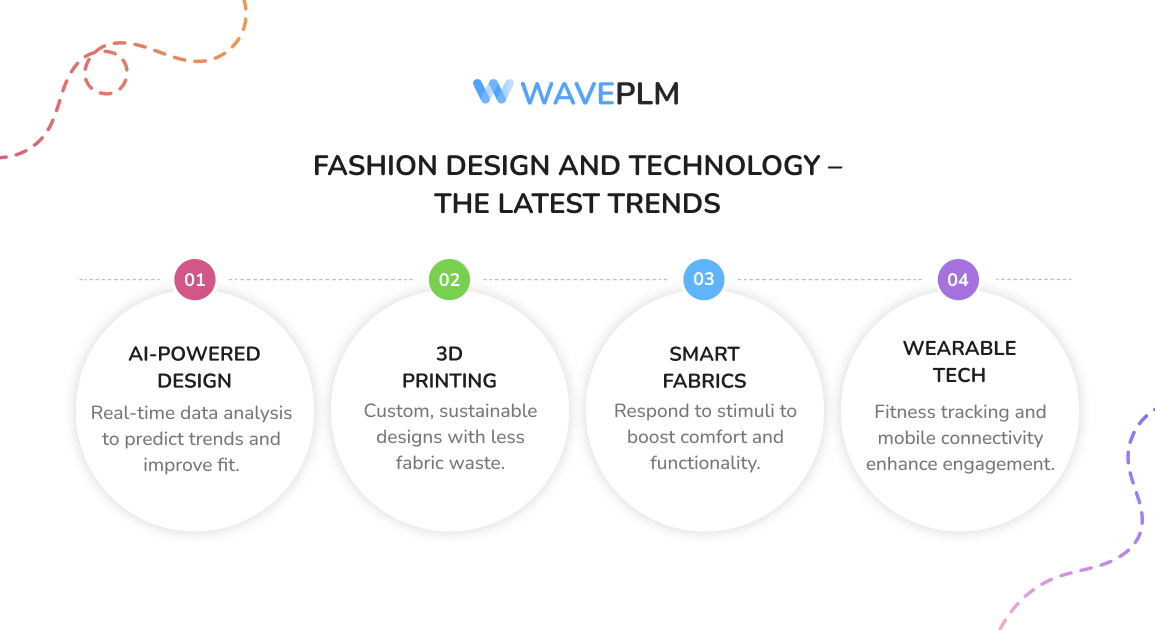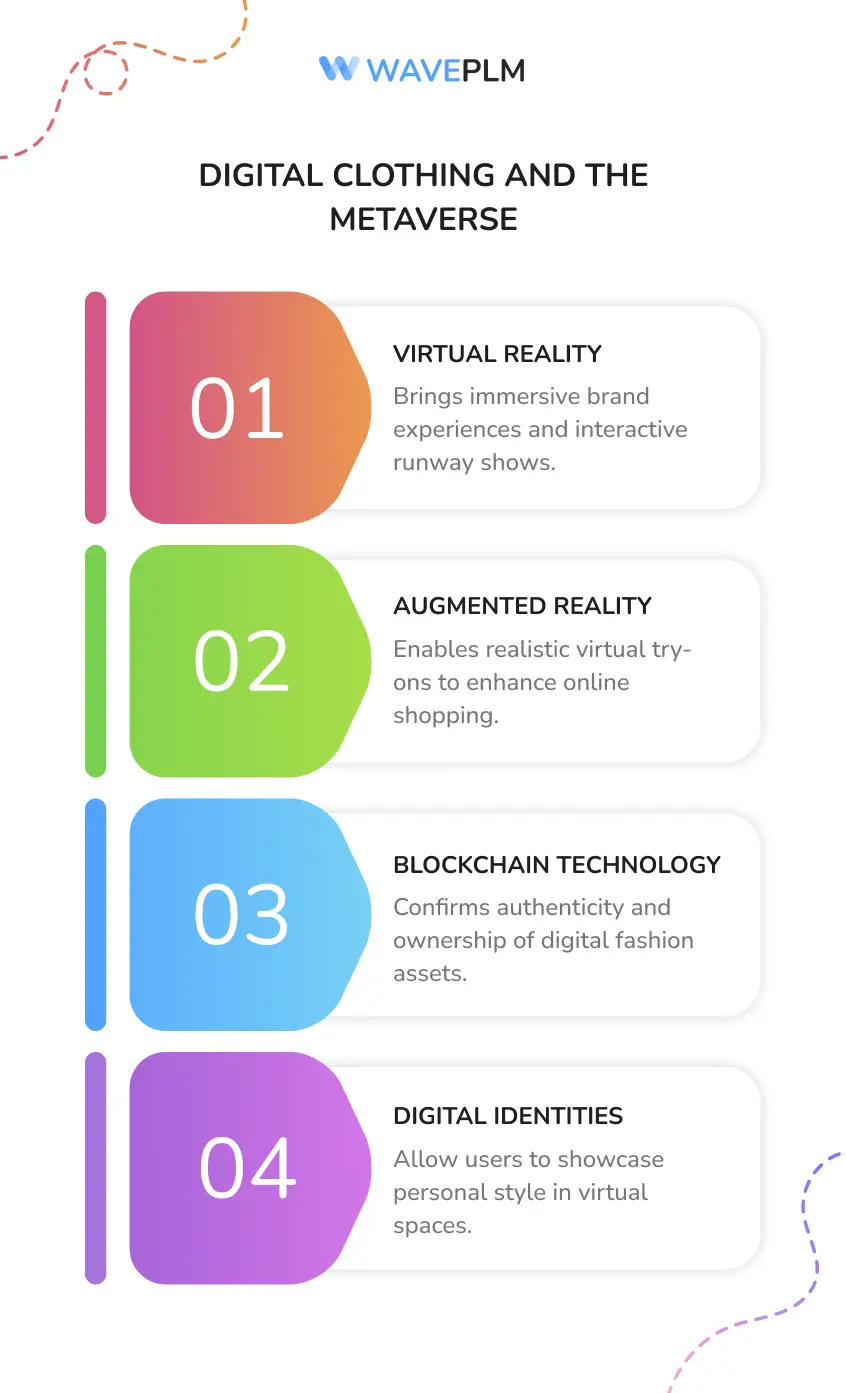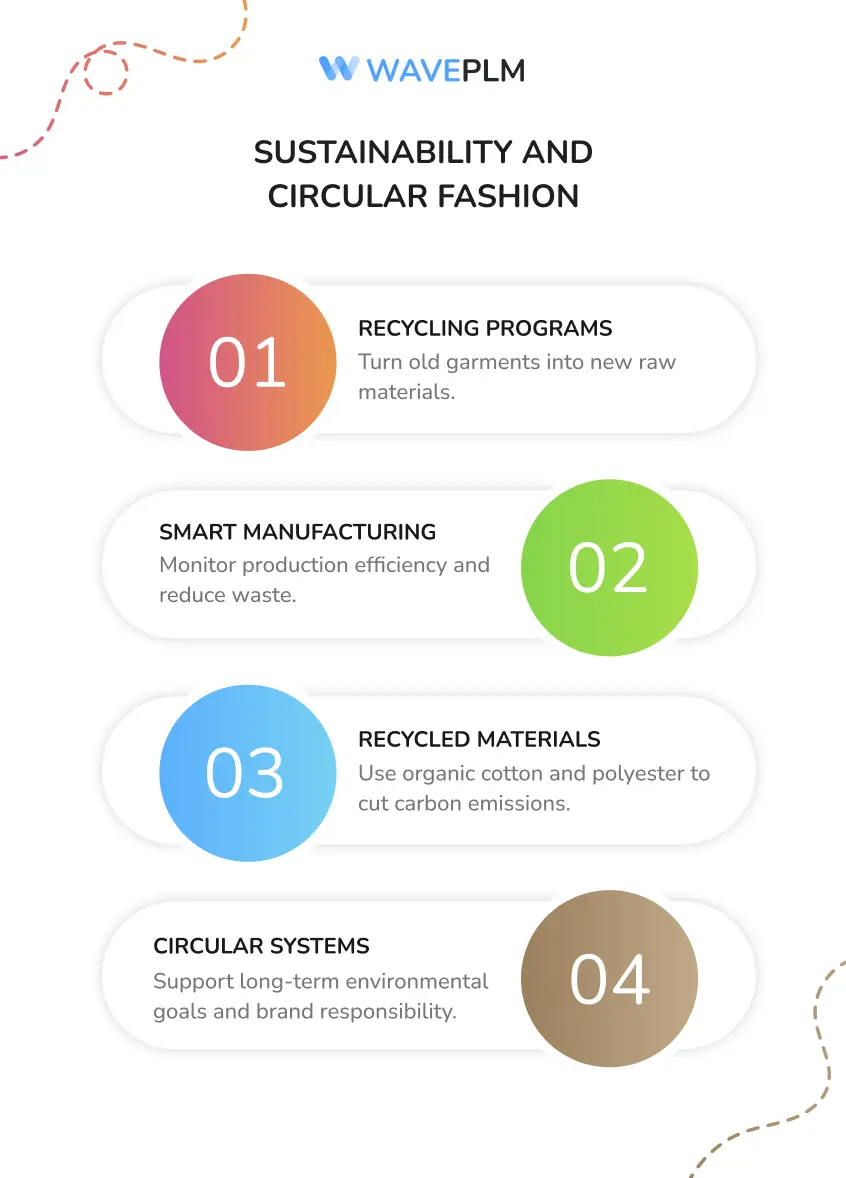
Fashion tech is redefining how the fashion industry operates. From wearable technology and smart textiles to digital clothing and virtual reality, the transformation is massive. Fashion brands now integrate artificial intelligence, augmented reality, and blockchain technology into their business models to enhance sustainability, supply chain transparency, and customer experience.
The Rise of Fashion Technology
In recent years, technology has become a driving force in the fashion world. The industry has evolved beyond fabrics and stitches. It now includes AI-powered tools, wearable gadgets, and mobile apps that connect creativity and commerce. Fashion technology empowers designers and companies to create smarter, more efficient systems.
Evolution of Fashion Tech
|
Year |
Key Development |
Impact on the Industry |
|---|---|---|
|
1990s |
Computer-aided design (CAD) |
Accelerated design process and accuracy |
|
2000s |
Enabled global reach for fashion brands |
|
|
2010s |
Smart textiles and wearable tech |
Combined clothing with technology for performance |
|
2020s |
AI, AR, and 3D printing |
Enhanced personalization and reduced environmental impact |
Fashion brands now rely on digital solutions to cut fabric waste, track raw materials, and ensure circular fashion systems. These advancements not only boost efficiency but also reduce the environmental impact of the entire product’s lifecycle.
Fashion Design and Technology: The Latest Trends
By 2025, the fusion of fashion and technology will reach new heights. Designers use AI to predict consumer trends, optimize the design process, and improve creativity. 3D printing allows for quick prototyping and customization, offering consumers unique pieces made from recycled materials like recycled polyester and organic cotton.
2025’s Most Influential Fashion Tech Trends
|
Trend |
Description |
Benefits |
|
Artificial Intelligence |
Helps design teams analyze real-time data to predict the latest trends |
Faster production, better fit |
|
3D Printing |
Produces sustainable and customized designs |
Reduces fabric waste and excess inventory |
|
Smart Fabrics |
Respond to external stimuli and adjust comfort |
Boosts functionality and wearability |
|
Wearable Technology |
Monitors fitness metrics and connects to mobile apps |
Enhances user engagement |
These innovations create new opportunities for many brands to expand their reach while focusing on sustainability and customer satisfaction.

Smart Textiles and Wearable Fashion Revolution
Smart textiles and wearable tech are changing how people interact with clothing and transforming the fashion industry. Fabrics now come with built-in sensors and conductive threads that monitor heart rate and adapt to body temperature. This innovation turns smart clothing into a lifestyle essential rather than a novelty.
Examples of Smart Textile Applications
|
Example |
|
|
Health Monitoring |
Smart shirts that monitor heart rate |
|
Fitness Tracking |
Jackets linked with fitness trackers |
|
Connectivity |
Clothing with built-in sensors for device charging |
|
Comfort Control |
Temperature-regulating garments |
These smart textiles redefine convenience and performance. Fashion brands integrating wearable technology and smart fabrics create a competitive advantage in an evolving market.
Digital Clothing and the Metaverse
Digital clothing is reshaping creativity in the fashion industry. Designers now craft pieces meant solely for digital platforms, cutting raw material use and reducing waste. Within virtual reality environments, consumers try on outfits through virtual fitting rooms and virtual try-ons.
The Role of Virtual Fashion
|
Concept |
Application |
|
Virtual Reality |
Immersive brand experiences and runway shows |
|
Augmented Reality |
Enables virtual try-ons in e-commerce |
|
Blockchain Technology |
Verifies ownership and authenticity of digital assets |
|
Digital Identities |
Let consumers express themselves in online spaces |
Brands embracing digital fashion gain deeper customer engagement and improve brand loyalty in both physical retail and online stores.

E-Commerce and Enhanced Customer Experience
E-commerce is evolving fast, driven by AI and AR. Consumers enjoy virtual fitting rooms, real-time feedback, and personalized shopping journeys. Augmented reality lets shoppers visualize outfits instantly, while artificial intelligence suggests products that match their tastes.
E-Commerce Tech Innovations
|
Technology |
Benefit |
|
Virtual Try-Ons |
Boost customer confidence before purchase |
|
AI-Powered Tools |
Improve product recommendations by implementing virtual sampling and prototyping. |
|
Seamless Omnichannel |
Connects online and physical retail experiences |
Fashion brands use these new technologies to enhance customer experience and drive long-term business success.
Business Management in Fashion Tech
Business management strategies now revolve around data and automation. AI assists with inventory management, preventing overproduction and reducing excess inventory. Blockchain improves supply chain transparency, helping companies verify ethical sourcing and production.
Tech-Driven Business Strategies
|
Strategy |
Benefit |
|
AI Inventory Management |
Reduces waste and costs |
|
Big Data Analytics |
Tracks real-time data for decision-making |
|
Sustainable Manufacturing |
Decreases environmental impact |
|
Supply Chain Transparency |
Builds consumer trust |
These tools allow brands to stay ahead of the market. With innovation and sustainability, companies optimize every stage of fashion supply chains.
Sustainability and Circular Fashion
Sustainability remains central to fashion technology. Circular fashion promotes reusing materials and reducing the product’s lifecycle impact. Companies now prioritize recycled materials, renewable energy, and ethical labor.
Eco-Friendly Innovations
|
Initiative |
Impact |
|
Recycling Programs |
Turns old garments into new raw materials |
|
Smart Manufacturing |
Monitors production efficiency |
|
Recycled Polyester & Organic Cotton |
Cuts carbon emissions |
|
Circular Systems |
Supports long-term environmental goals |
These strategies help fashion brands balance creativity with responsibility, ensuring the industry’s long-term sustainability.

The Future of Fashion Tech: 2025 and Beyond
The fashion tech revolution will only grow stronger. As wearable technology, artificial intelligence, and virtual reality evolve, brands that embrace innovation will dominate global markets.
Future Outlook
|
Trend |
Outlook for 2025+ |
|
Virtual Fitting Rooms |
Become standard in e-commerce |
|
Integrates health tracking seamlessly and demonstrates green innovation in fashion. |
|
|
AI Design Tools |
Simplify the creative process |
|
Blockchain Integration |
Strengthens ethical standards |
Fashion technology drives the next phase of industry transformation. Companies that adopt sustainable practices and use new technologies will lead the fashion world with creativity, responsibility, and success.
Quick Takeaways for Fashion Brands
|
Focus Area |
Benefit |
|
AI and Data |
Smart insights and reduced excess inventory |
|
Wearable Tech |
Functional, stylish innovation |
|
Circular Fashion |
Sustainable growth and longevity |
|
E-Commerce Tech |
Personalized customer experience |
|
Smart Textiles |
Practical comfort and design synergy |
The integration of fashion tech, sustainability, and digital innovation defines the future of fashion business management. To stay ahead, brands must embrace technology that connects creativity, efficiency, and ethics in a seamless ecosystem.





Leave a Reply